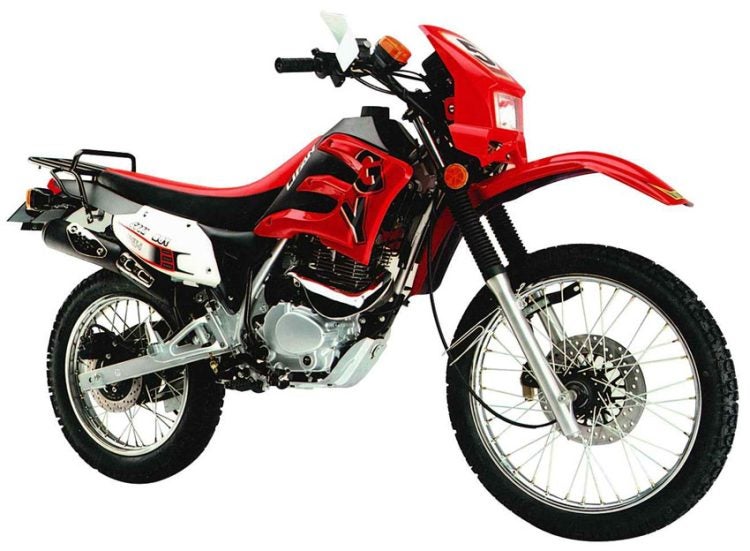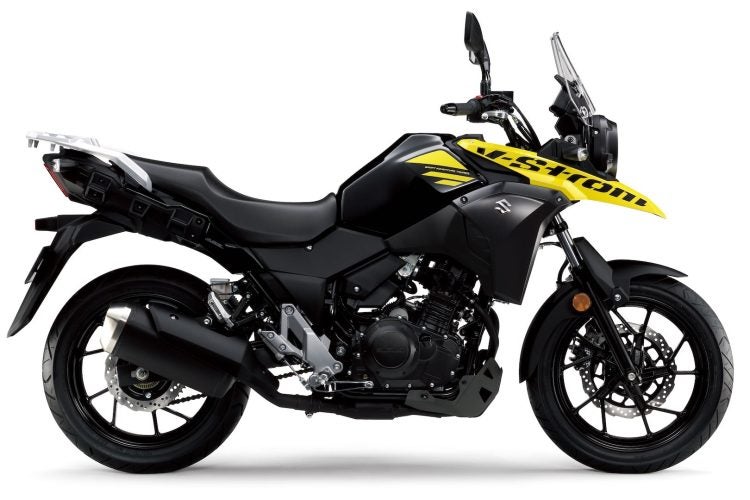Ever considered buying a Chinese motorcycle? Get ready—although everything is still very much up in the air, thanks to wars, rumors of wars, the economy and COVID’s residual effects, there’s a very good chance your next bike, or the bike after that, will be made in China.
The current situation
For decades, the US and Canadian motorcycle markets have been stratified. American and European bikes occupy the top- and mid-range of the pricing pyramid. Japanese bikes occupy the mid- and low-range. There are exceptions, but that’s mostly how it works. Almost 20 years ago, several Chinese manufacturers attempted to grab the low-end market, flooding the US market. There are some Chinese bikes on the market today, but they haven’t ever gained widespread acceptance.
But, that might be about to change.

The Lifan GY-5, the Official Dual Sport of Eastern Europe, judging by all the YouTube uploads I see. These machines were crude, but reliable. Their modern-day Chinese-built counterparts are much better bikes. Photo: Lifan
Chinese bikes got better
The first reason that Chinese motorcycles are here to stay is, they’ve gotten a lot better. I owned a Lifan GY-5 around 2008-2009, a weedy dual sport with a completely upside-down rear linkage design. It was very reliable (the engine was a bored-out copy of a Honda CG125), but suspension performance was terrible. A year later, I spent a summer tooling around on a Konker KSM-200, another Chinese dual sport/supermoto model. The Konker (sold in the US under the Qlink brand) was also very mechanically reliable, but gutless—basically, it was a detuned copy of the Suzuki DR200. The Konker survived some serious thrashings, but would blow out its headlight and taillight bulbs with monotonous regularity. And did I mention it was gutless?
Along the way, I also had some time on another Honda knock-off, called the Saga GY250 or something like that. This was basically the Lifan, but with more power, better suspension … and a gas tank that leaked, straight from the factory. Sigh. They almost had it right.
In the decade since, a lot has changed. Chinese motorcycles aren’t common in North America yet, but they are certainly common in Europe. The factories have implemented better quality control, and improved their machines’ performance. They still tend to weigh more than competing machines, and make less power, but they’re miles ahead of their early-2000s designs. Their styling is much-improved, too. And while China mostly exported 125-250cc machines in the early 2000s, they make everything now: 450 rally bikes! Electric dual sports! Big-bore sport tourers! Budget nakeds! American-style V-twins!

The Suzuki V-Strom 250, based on the engine originally developed for the GW250. The GW was made in China for Suzuki. Photo: Suzuki
Chinese factories collaborated with Japan and Europe
Part of the reason that Chinese motorcycles got better is, some manufacturers made deals with European and Japanese brands, exchanging their low-cost industrial capacity for technology. Why steal the cow, when the farmer will trade you the milk for some cheap assets? Although naysayers accuse the Chinese of copyright violations, and that certainly does happen sometimes, many Chinese motorcycles are based on expired patents or on technology that was traded to them by other manufacturers. And, frankly, when you’ve got a country of a billion citizens, it’s not too hard to find someone who can design motorcycles; it’s not rocket science (and the Chinese are working on that, too).
The first big-news collaboration between China and Japan was the Suzuki GW250, which was built in China to Japanese specs and standards. There are similar deals in the works with KTM and Harley-Davidson. These arrangements all benefit the Chinese moto-product in the long run.

The CFMoto 650 Adventure. Maybe not your cup of tea, but it’s got that ADV-Sports styling that’s taking over the touring segment these days, plus hard bags, plus some other nice features, all at a price similar to the KLR650 (depending on your local dealership’s mark-up). If you can’t find a KLR, would this do? Photo: CFMoto
Chinese bikes are available when others aren’t
This is a huge factor. Many people don’t care where a bike is made—they just want a motorcycle, now. This helps Chinese OEMs, who are bringing in motorcycles to the US and Canada even as the Japanese are having trouble doing that. This isn’t to say China doesn’t have its own supply issues; the country’s internal anti-COVID policies mean the motorcycle factories could close down at any time. But, China is definitely filling some holes in the market right now. In a few years, this may become even more of a factor. Tried buying non-Chinese electronics lately, or clothes, or other consumer goods? It’s difficult. Now, imagine if that same principle carried over to motorcycles.

The CFMoto 300NK will cost you less than a Japanese machine in the same category. This is less and less true of Chinese bikes, as their pricing rises as the bikes themselves get better, but you still generally get more machine for your money. Photo: CFMoto
Chinese pricing is still low
All things being equal, many consumers will still want to wait for a Honda, or other Japanese motorcycle or even a Eurobike. But guess what? Inflation is pinching all of us, and Chinese motorcycles are now offering lots of bike for less money than Japanese or European machines. The golden days of cheap commuters from Japan are over. The 300-400 class machines that offered so much bang-for-the-buck in the 2010s are now priced over $6,000. The Chinese alternatives aren’t exactly cheap, but they do have a lower price tag.
Why not buy Chinese?
Some people will never buy a Chinese motorcycle, even still. After all, some American riders still won’t buy anything but a Harley-Davidson. The great thing about our current western democratic societies is that you can spend your money more-or-less how you want, and if that means you don’t want to buy a motorcycle that comes from a non-democracy like China, that’s certainly your right. I would never attempt to persuade you otherwise (although your local moto dealership salesman might).
Aside from the whole political thing, there’s also the always-looming threat of war over Taiwan. The geopolitical Cassandras of Twitter have been predicting this for years. It hasn’t happened yet, but China certainly wants Taiwan under its governance again, and that’s going to upset the global trade applecart if it happens. Will that cut off our trade ties to China then? Look at the current relationship between Russia and the EU for some hints as to how that might play out.
Otherwise, there’s always the issue of reliability, mechanical longevity and warranty honoring. Chinese OEMs have to overcome damaged reputations here, and at least in the immediate future, no matter how good Chinese bikes might be, they’ll be judged by the machines their country sold here 15 years ago for a while yet.







